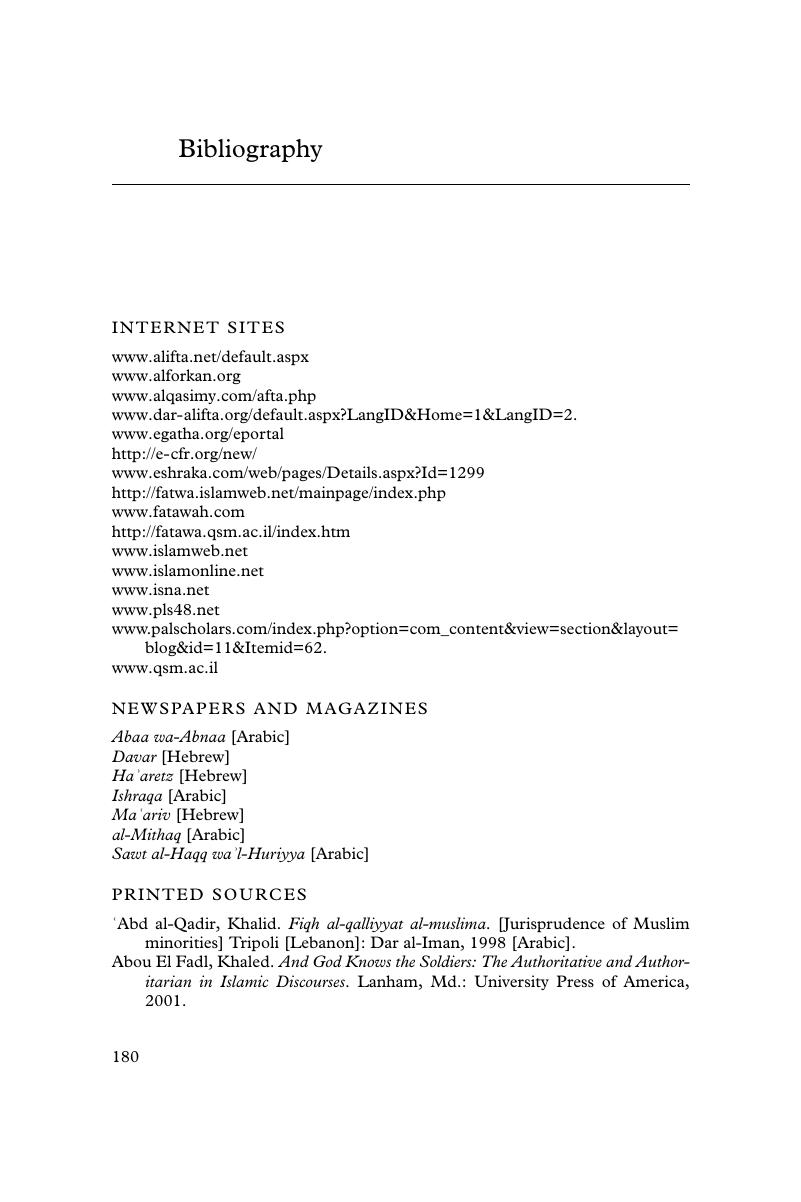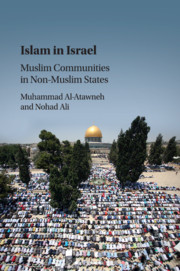Book contents
- Islam in Israel
- Advance Praise for Islam in Israel
- Islam in Israel
- Copyright page
- Dedication
- Contents
- Figures
- Tables
- Acknowledgments
- Notes on Transliteration and Translation
- Introduction
- 1 Islam in Israel
- 2 Islamic Religious Authority and Interpretation in Israel
- 3 Islam and the Public
- 4 Muslim Identity and Islamic Practice in Israel
- 5 The Muslim Minority and the Israeli Establishment
- 6 Being Muslim in the Israeli Socio-Cultural Space
- Conclusions
- Book part
- Glossary of Arabic Terms1
- Bibliography
- Index
- References
Bibliography
Published online by Cambridge University Press: 06 January 2018
- Islam in Israel
- Advance Praise for Islam in Israel
- Islam in Israel
- Copyright page
- Dedication
- Contents
- Figures
- Tables
- Acknowledgments
- Notes on Transliteration and Translation
- Introduction
- 1 Islam in Israel
- 2 Islamic Religious Authority and Interpretation in Israel
- 3 Islam and the Public
- 4 Muslim Identity and Islamic Practice in Israel
- 5 The Muslim Minority and the Israeli Establishment
- 6 Being Muslim in the Israeli Socio-Cultural Space
- Conclusions
- Book part
- Glossary of Arabic Terms1
- Bibliography
- Index
- References
Summary

- Type
- Chapter
- Information
- Islam in IsraelMuslim Communities in Non-Muslim States, pp. 180 - 192Publisher: Cambridge University PressPrint publication year: 2018



